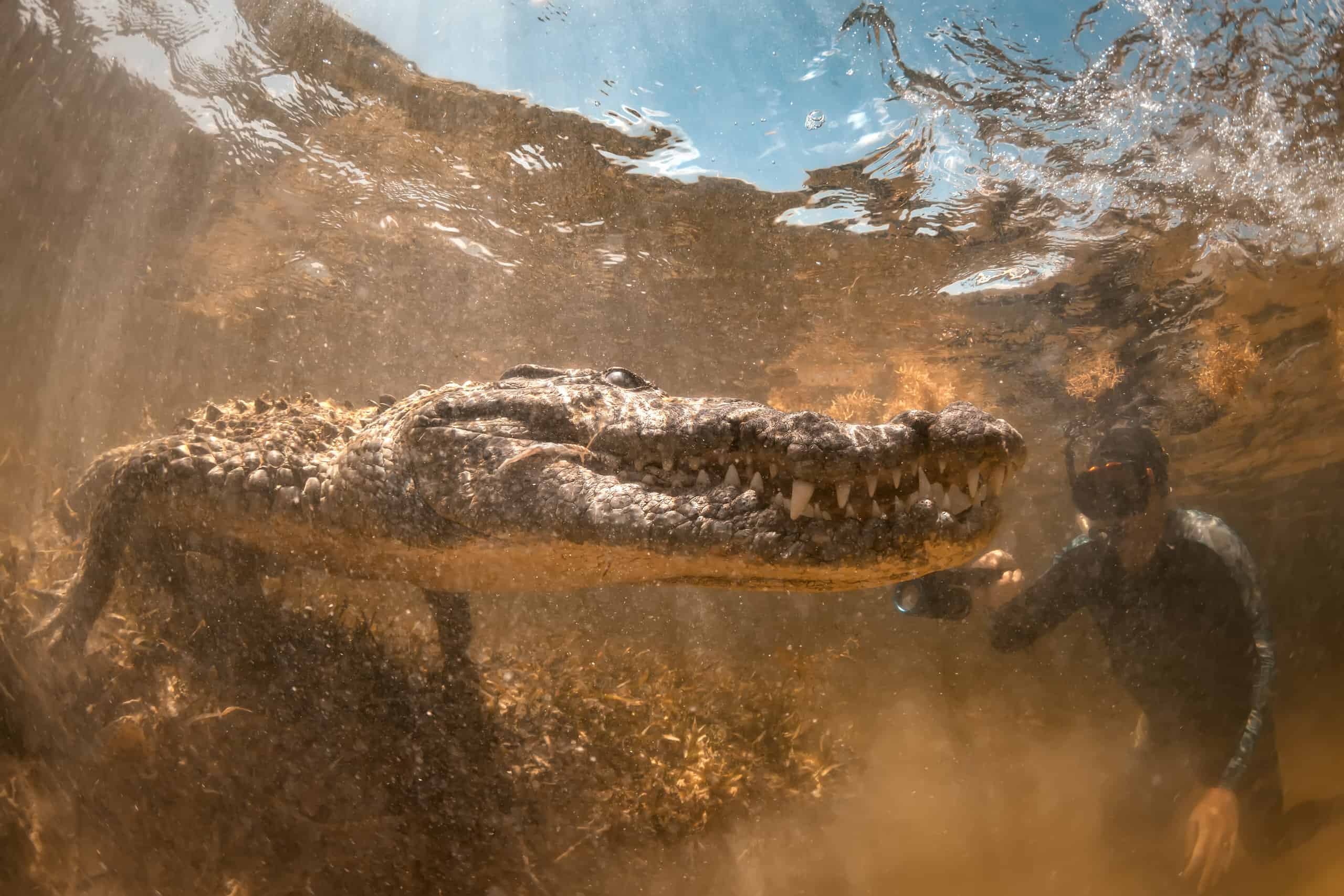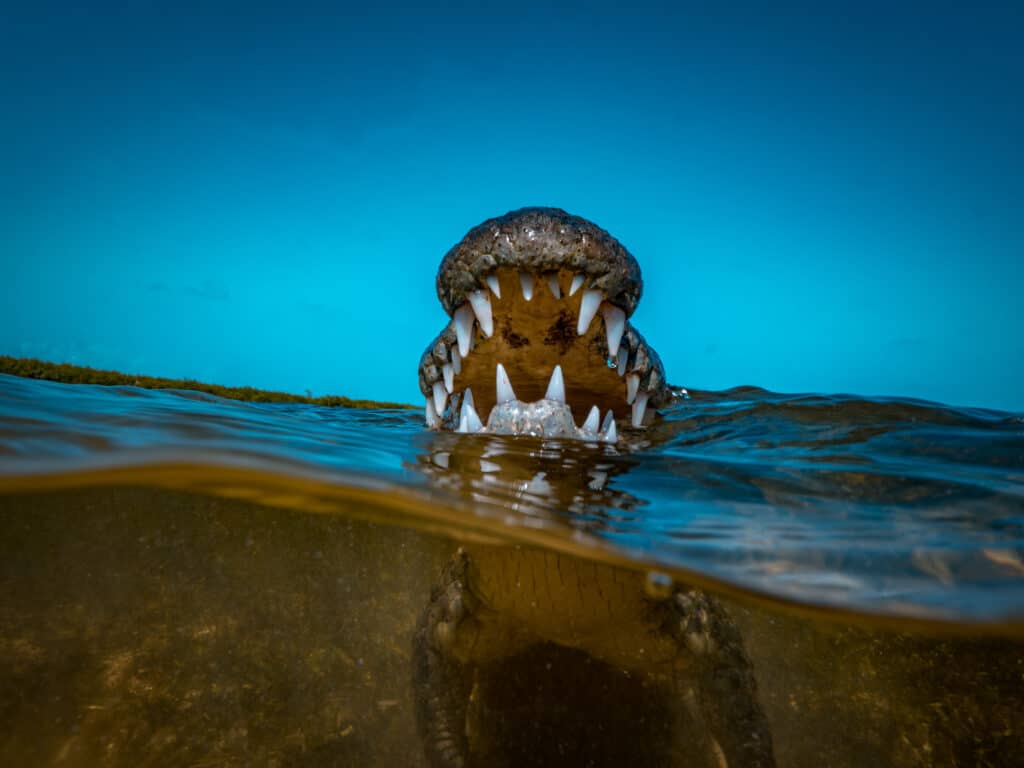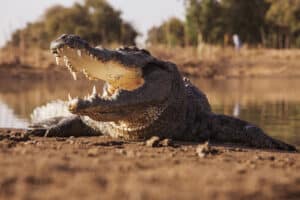Continue reading for our analysis...


Crocodiles expand their mouths and snap their jaws just like they do on land while they prey underwater.
©Danny Ye/Shutterstock.com
Crocodiles have a reputation for being greedy hunters who will consume almost anything that wanders into their domain. So how do they conduct their hunting?
Crocodiles hunt by taking down their target in the water. They’ll wait until their prey enters the water for a drink or a bath. A crocodile captures its prey, pulls it into the water, drowns it, and then consumes the entire animal.
The largest of all reptiles, crocodiles can reach lengths of up to 20 feet in some species. Despite their size, they have a remarkable ability to approach prey from unexpected distances and can swim up to 20 miles per hour in open water.
Most animals of their stature would have a hard time blending in and surprising prey but alas, crocodiles are unlike any other creature! Despite having a terrifying reputation as a predator, it is still unclear exactly how crocodiles hunt underwater.
Thanks to a video posted on Youtube, we get to see what it looks like when a crocodile rips a bird straight out of the air! Crocodiles expand their mouths and snap their jaws just like they do on land while they prey underwater.
The main difference is that their bite force isn’t as strong in the dense water as it is on land.
When a crocodile bites on land, 3,700 PSI of power is produced. Since it hasn’t been measured, reasoning suggests that the biting force underwater is less than it is on land.

Crocodiles are some of the oldest predators still roaming the earth.
©Alexander Machulskiy/Shutterstock.com
Fast As Lightning
In Lake Panic in Kruger Park, there is usually something interesting to observe. This wonderful moment was captured on camera by Chris de Lange and his wife. A crocodile approached two white-faced ducks in the water.
A green-backed heron was plucked from the air by the crocodile as it passed by. The heron vanished in two gulps! Everything occurred so quickly that the footage must be viewed in slow motion.
Green Herons are ubiquitous and common, however, they can be difficult to spot at first. Green Herons are more likely to be found on the edges, in shallow water, or hidden by foliage than larger herons, who prefer to stand out in the open areas of wetlands.
As the croc lunges from the water, the rest of the birds scurry away in hopes of escaping the grips of the apex predator. Luckily for them, the reptile already had its eyes on the prize before breaking the surface of the water.
Is it Normal for Crocs to Snatch Prey From the Air?

Crocodiles move their tails like snakes when lunging out of the water.
©Willyam Bradberry/Shutterstock.com
Considering a crocodile’s long body and short legs – you wouldn’t think that it could jump out of the water to capture a bird flying overhead. The video is evidence of this frightening skill – but how does the croc jump so high? The answer is that it employs a manouvoir called sinusoidal undulation – the same way a snake moves its body. The crocodile uses its powerful tail in this manner to force its body out of the water.
You have probably seen plenty of videos of crocs darting out of the water to capture prey in the blink of an eye. The speed of this terrifying jump makes it even more astonishing! Crocodiles springing out of the water to snatch prey with lightening speed is such an amazing sight. It is so thrilling that captains of swamp tour boats bait crocs with meat on sticks so tourists can see it for themselves. Is it normal for crocs to snatch prey from the air? Yes, it is.
Thank you for reading! Have some feedback for us? Contact the AZ Animals editorial team.






